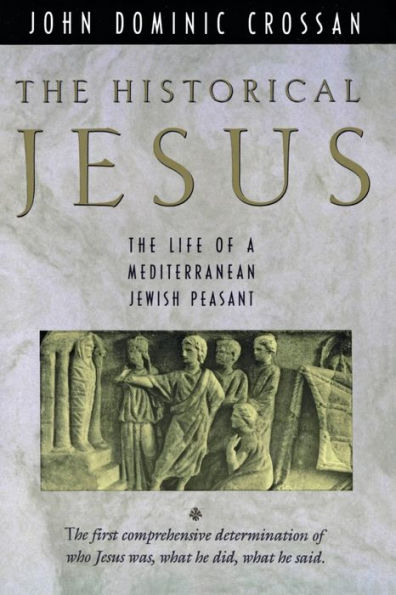Read an Excerpt
Chapter OneThen and Now
The voices that speak to us from antiquity are overwhelmingly those of the cultured few, the elites. The modern voices that carry on their tale are overwhelmingly those of white, middleclass, European and North American males. These men can, and do, laud imperialistic, authoritarian slave societies. The scholarship of antiquity is often removed from the real world, hygienically free of value judgements. Of the value judgements, that is, of the voiceless masses, the 95 % who knew how "the other half" lived in antiquity.
The peasants form no part of the literate world on which most reconstructions of ancient history focus. Indeed, the peasants--the pagani--did not even form part of the lowly Christian (town dweller's) world. They are almost lost to historical view, because of their illiteracy and localism.
Thomas F. Carney (xiv, 231 note 123)
The first century of the common era is obscured from our contemporary view by three giant filters. The past is recorded almost exclusively in the voices of elites and males, in the viewpoints of the wealthy and the powerful, in the visions of the literate and the educated. That already constricted report is available sometimes through the deliberate decision of later dominations but also through the vagaries of chance and luck, fate and accident. Either way, further constrictions. And our present looks back to the past, to that already doubly filtered past, dependent, of course, on where one's present is located, but, let us say in individualistic, democratic, urban, middleclass America,often with ethnocentric presumptions it is not even aware of projecting.
Some demographic statistics from the past may serve, therefore, not as proofs about anything but as warnings about everything. Bruce Malina speaks of classes and masses. "The preindustrial city contained no more than ten percent of the entire population under its direct and immediate control. And of this ten percent that constituted the preindustrial urban population, perhaps less than two percent belonged to the elite or high class" (1981:72). Thomas Carney writes of death and taxes. On death: "We are used to a society in which very few infants are lost at birth or prior to weaning. Death, happily, tends to be remote from our experience, if we are below 30. People do not start dying in any numbers until their late fifties or, generally, their sixties or later. In preindustrial society, however, probably a third of the live births were dead before they reached the age of six. By sixteen something like 60% of these live births would have died, 75% by twenty-six, and 90% by forty-six. Very few--3% maybe--reached their sixties" (88). On taxes: "In general, resources extracted from the tax base were mostly redistributed to the men of the apparatus--who mostly invested their official gains in large estates. Taxation was generally regressive . . . At best they protected the tax base; they rarely developed it--more often, indeed, they eroded it . . . They took a larger share, in fact, than did the elites in more primitive societies before them, or in industrial societies after them" (341).
How, then, is it even possible for us to imagine the face of a Mediterranean Jewish peasant through those triple filters and across the gulf of those millennia? Three major sources help at least somewhat to counter those three filters just mentioned. First, on the macrocosmic level, there are anthropological or sociological studies and models, especially those using trans-temporal and cross-cultural disciplines. Next, on the mesocosmic and more local level, there are archaeological digs and discoveries. Finally, on the microcosmic level, there arc papyrus documents and archives, documentary texts predominantly from Egypt in which ordinary peasants have preserved an individual voice and a personal presence normally denied them by their illiteracy and their poverty.
A Friendly Sea in a Hostile LandscapeThree terse judgments, sharp as Mediterranean shadows. "The Mediterranean," in the words of Jane Schneider, "is something of a paradox: a friendly sea surrounded by a hostile landscape" (3). "All Mediterranean societies," in the words of Julian Pitt-Rivers, "face the sea and their enemies--and customers--on the far side of it" (1977:ix). "A double constraint," in the words of Fernand Braudel, "has always been at the heart of Mediterranean history: poverty and the uncertainty of the morrow" (1.245). But even to speak of the social and cultural anthropology of the Mediterranean basin demands three steps, each controversial in its possibility and fraught with difficulties in its execution.
The first step proposes a valid pan-Mediterranean construct open to anthropological investigation. John Davis limits this Mediterranean unity exclusively to historical contacts. Early in his book The People of the Mediterranean he describes that unity as, "those institutions, customs and practices which result from the conversation and commerce of thousands of years, the creation of very different peoples who have come into contact round the mediterranean shores" (13). That same judgment is reiterated at the book's conclusion: "over the millennia it has proved impossible for mediterranean people to ignore each other. They have conquered, colonised, converted; they have traded, administered, intermarried--the contacts are perpetual and inescapable" (255).
Jeremy Boissevain, in reviewing Davis's book, argues for a more profound unity, that of ecology. "The Mediterranean is more than just a fieldof interaction, commerce, and conquest. In spite of his materialist analysisof honour, Davis, in my view, has missed the most obvious materialistparameters that together give the region its distinctive signature: sea, climate, terrain, and mode of production . . . These materialist parameters,placed in a comparative historical framework, provide a basis on which various differences and similarities characteristic of mediterranean societiesmay be usefully compared . . . Mediterranean men have done a great dealbesides 'converse' and 'exchange' . . . Men and women around the middlesea have also worked hard to solve similar problems of production undercomparable physical conditions" (Boissevain et al. 83).



